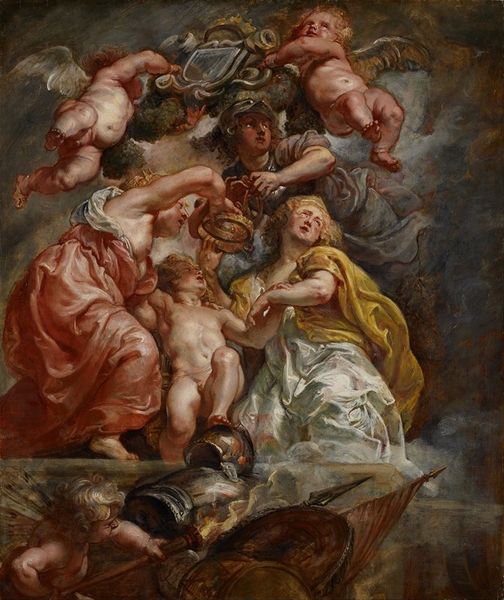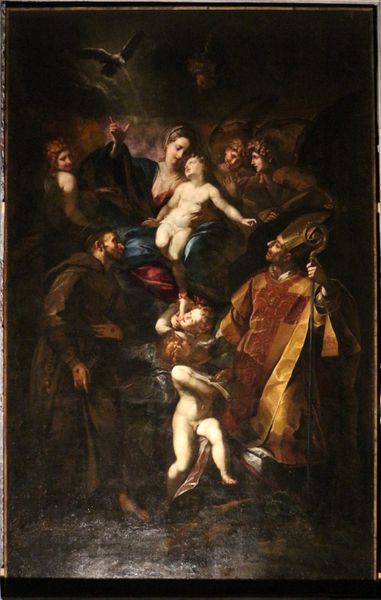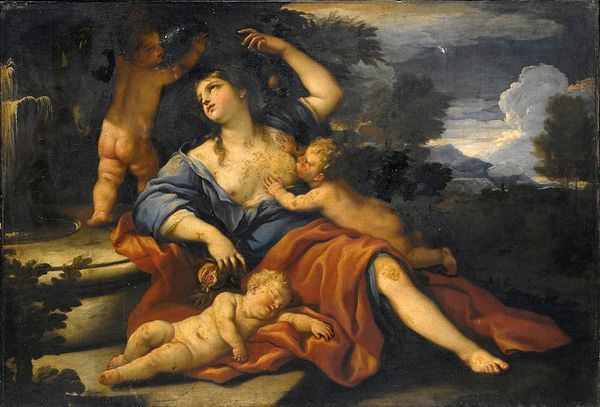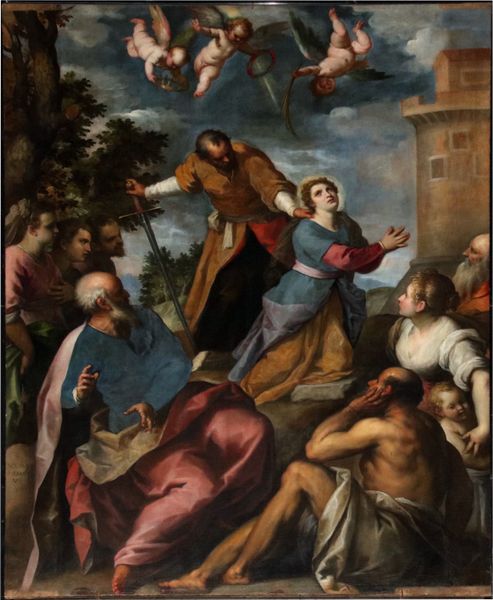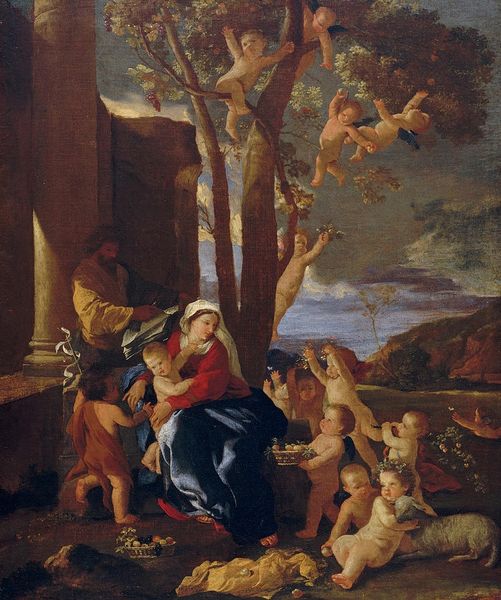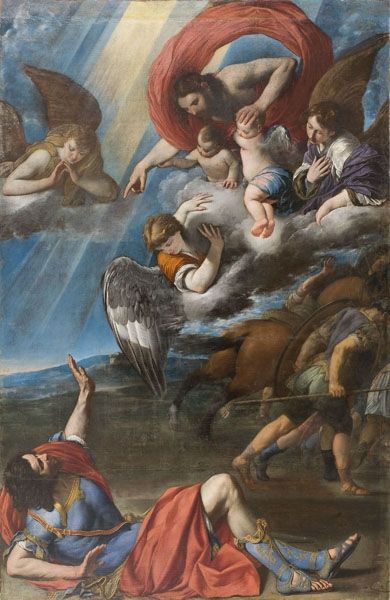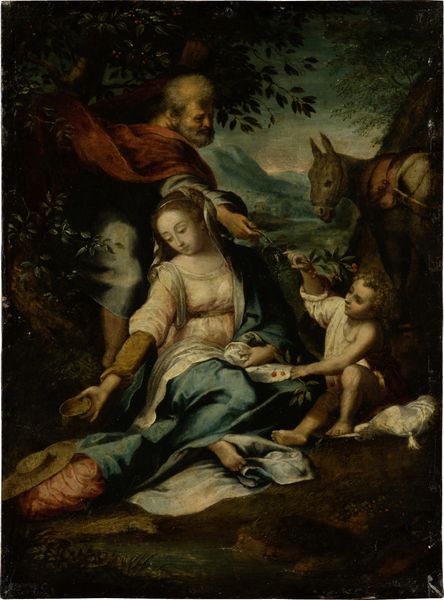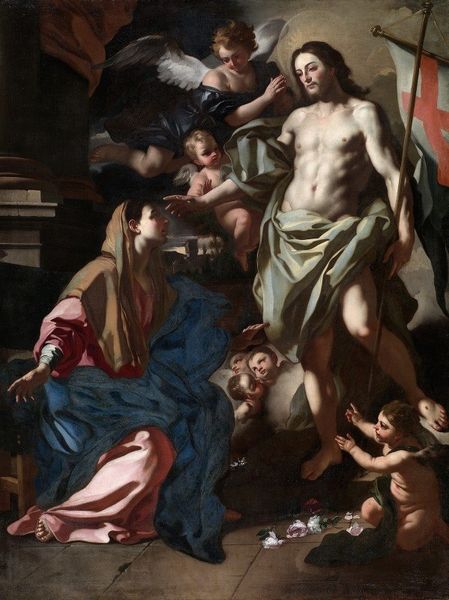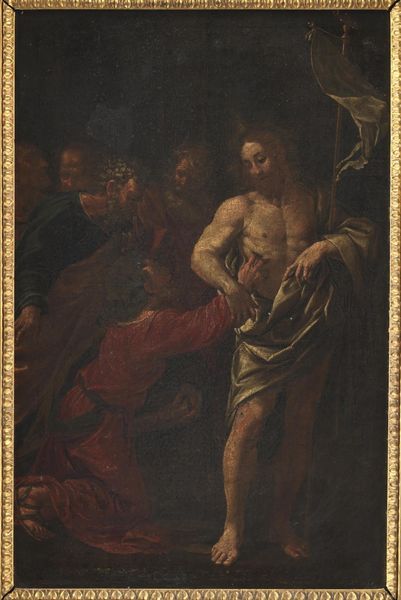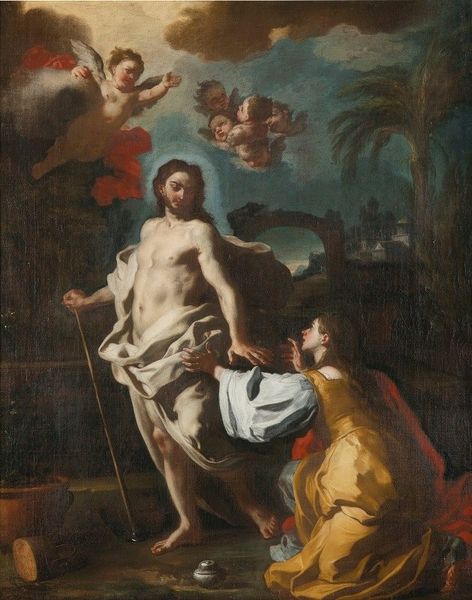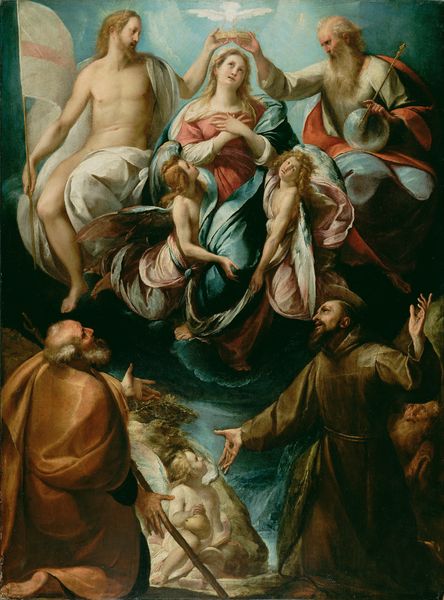
painting, oil-paint
#
allegory
#
baroque
#
painting
#
oil-paint
#
figuration
#
oil painting
#
mythology
#
history-painting
Copyright: Public Domain: Artvee
Editor: Here we have Sebastiano Ricci’s oil painting, “Aurora y Thyton.” I'm struck by the contrast between the darkness at the bottom of the canvas and the bright, almost radiant figure of Aurora descending. What compositional elements do you find most compelling? Curator: I am drawn to the dynamic diagonals. The body of Tithonus, and Aurora's pose – observe the upward reach, the backward glance; see how these diagonals intersect to generate tension. And note, if you will, how that tension is reinforced by the chromatic arrangement, the shadowy earth tones against the vivid reds and yellows. What meaning might be drawn from these aesthetic choices? Editor: It creates a sense of drama, a pivotal moment captured in paint. The limited palette also really directs the eye, but it’s quite unusual for baroque to be so limited in terms of color, isn’t it? Curator: The controlled palette may reflect a conscious choice, a formal device meant to highlight, to foreground the narrative moment itself. Notice too the textures—how the impasto of Aurora’s drapery contrasts against the smoother rendering of Tithonus' skin. Does that distinction hold meaning? Consider its formal relationship to other artistic vocabularies. Editor: Possibly emphasizing Aurora's ethereal nature compared to the more earthly depiction of Tithonus. Thanks, I see that relationship more clearly now! It's fascinating how closely analyzing those visual elements can reveal layers of meaning that I might have missed.
Comments
No comments
Be the first to comment and join the conversation on the ultimate creative platform.
